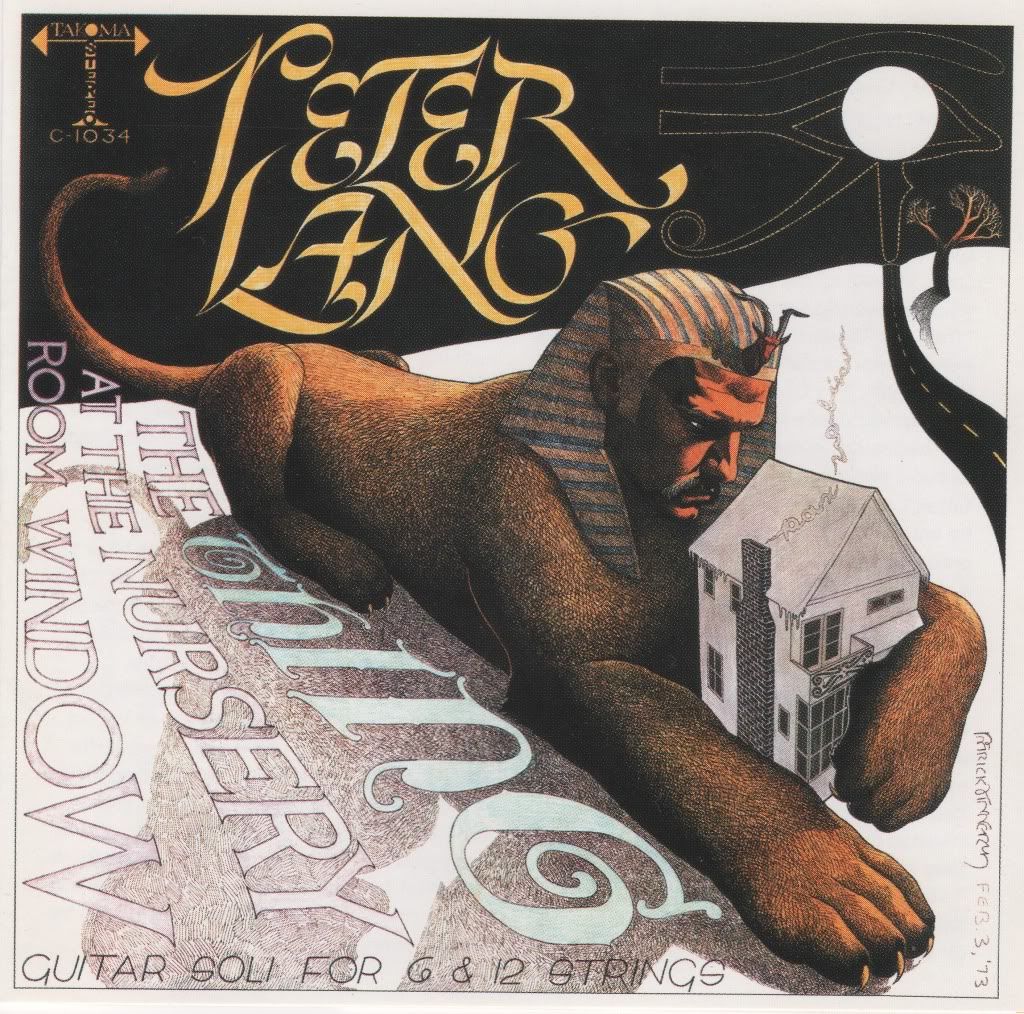 |
| One of the greatest title/cover art combinations I'm aware of...what exactly is that cursive smoke spelling out? |
Especially considering the fact that the "American Primitive" genre of folk guitar was just over a decade old in the early 1970's, I think it's a testament to the depth of the stable of outstanding guitarists Takoma Records had assembled that each one managed to have a distinctive style and purpose. While genre founder John Fahey wanted to communicate something mystical he discovered by examining the elemental essence of early blues players under a microscope and Robbie Basho strove to reimagine his guitar technique to communicate incommunicable mystical secrets, Leo Kottke and Peter Lang both seemed to be players first and composers second--musicians driven most by the joy of making beautiful sounds come out of their instruments. While this is an important component to any musician's working life, I think vision is one of the elements that separates musicians who truly have something to say from those who are simply technically proficient. What I find most interesting about Peter Lang's Takoma debut is the fact that it finds the guitarist at a developmental crossroads, growing past his pure technical roots into a territory with far fewer limits, determined only by his own compositional imagination.
According to the CD reissue's liner notes, Fahey told Lang that he was thinking (as a composer) in too small blocks of time and urged him to allow his pieces to stretch out a bit. You can hear where Fahey's coming from on the opening tracks "Snow Toad" and "Muggy Friday," where Lang's formidable technique seems bent on making the finish line. While his rapid fingerpicking audibly owes more to Kottke's style than Fahey's, Lang's approach is subtly idiosyncratic, with a nice emphasis on string bends and slides. As the album progresses, though, we get to see the fruits of Lang's response to Fahey's critique--"Turnpike Terror," though only slightly longer, starts playing with dynamic and textural changes, utilizing space and strumming to take the short piece in several directions. The marvelous "Bituminous Nightmare" stretches even further, flirting with much more dissonance, theme development and single note layering (for lack of a better term) that seems to be wholly Lang's trick.
Though only a few of the songs here fully demonstrate Lang's growth as a composer, his playing is always beautiful, engaging, and (for my money) more emotionally compelling than Kottke's. He proves himself an able slide player on "Wide Oval Ripoff," a capable balladeer on "Young Man, Young Man, Look At Your Shoes," and unafraid of lightning fast swing on "Quetico Reel." Satisfyingly, though, the album ends on his most ambitious and adventurous compositions, the nearly 10-minute "Future Shot at the Rainbow," which further explores his penchant for overlapping single note lines to an almost baroque extent, unfolding and refolding a humbly beautiful melody with a real sense of journey abetted by judicious pacing and flow. While Lang never managed a consistent output, his playing is always delightful and this album stands as one of the most enjoyable Takoma releases and a hopeful nod to the virtue of stretching beyond your comfort zone.
Get it here

No comments:
Post a Comment